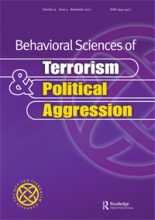Little is known about which features of Facebook’s interface appeal to users of far-right extremist groups, how such features may influence a user’s interpretation of far-right extremist themes and narratives, and how this is being experienced across various nations. This paper looks at why certain ‘Reactions’ appealed to users in Australian and Canadian far-right groups on Facebook, and how these ‘Reactions’ may have characterized user decisions during their interaction with far-right extremist themes and narratives. A mixed methods approach has been used to conduct a cross-national comparative analysis of three years of ‘Reaction’ use across 59 Australian and Canadian far-right extremist groups on Facebook (2016–2019). The level of user engagement with administrator posts was assessed using ‘Reactions’ and identified themes and narratives that generated the most user engagement specific to six ‘Reactions’ ( ‘Love’, ‘Haha’, ‘Wow’, ‘Sad’, ‘Angry’ and ‘Thankful’). This was paired with an in-depth qualitative analysis of the themes and narratives that attracted the most user engagement specific to two popular ‘Reactions’ used over time ( ‘Angry’ and ‘Love’). Results highlight ‘Angry’ and ‘Love’ as the two most popular ‘Reactions’ assigned to in-group-out-group themes and narratives, with ‘ algorithms having propelled their partnership in these groups.
